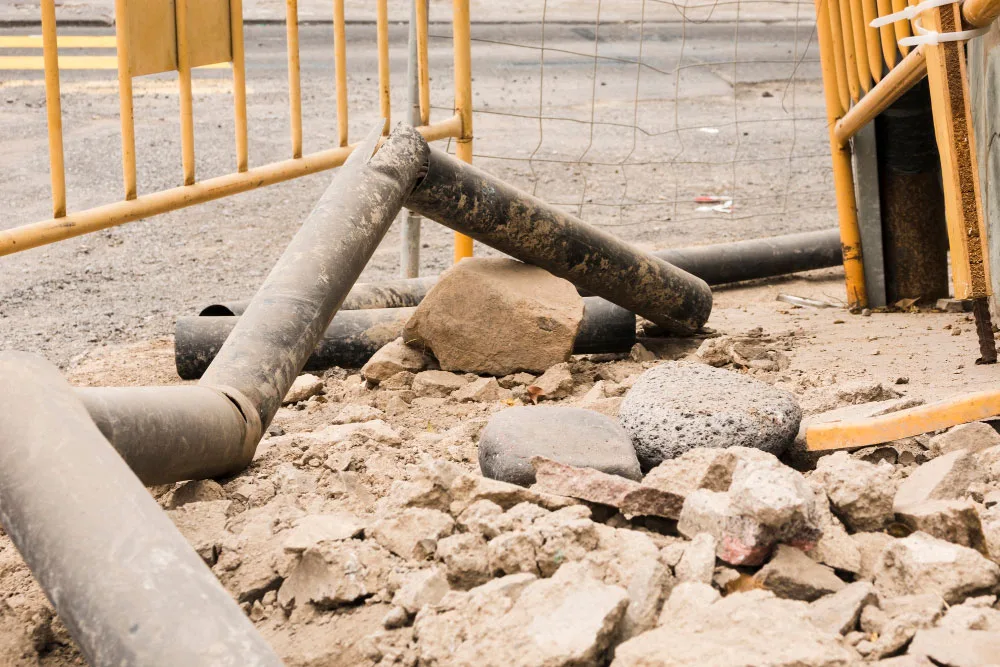
Demolition is an essential process when it comes to construction and renovation projects. It involves tearing down existing structures to make way for new ones. However, many people overlook the importance of site clean-up after demolition. This step is crucial to ensure the safety and efficiency of the construction site.
A cluttered and debris-littered site can lead to accidents, injuries, and delays in the project timeline. Moreover, failure to clean up the site properly can result in legal disputes and penalties. In this guide, we will discuss the importance of site clean-up after demolition and the steps you can take to maintain safety and efficiency.
So, whether you are a contractor, builder, or property owner, read on to learn more about why site clean-up should be a top priority in your construction project.
Demolition can produce a wide range of debris and waste materials that need to be removed from the site. These can include bricks, concrete, wood, metal, glass, and hazardous materials like asbestos and lead-based paint. Depending on the size and scope of the demolition project, the amount of debris left behind can be substantial.
Bricks and concrete are some of the most common types of debris left after demolition. These materials can be heavy and difficult to move, making them a hazard for workers and equipment. Wood, metal, and glass can also cause injuries if not properly handled and removed from the site.
Hazardous materials like asbestos and lead-based paint require special handling and disposal procedures to ensure they do not pose a risk to human health and the environment.
Site clean-up after demolition is essential to maintain safety and efficiency on the construction site. A cluttered and debris-littered site can lead to accidents and injuries for workers and visitors.
Sharp objects like nails and broken glass can cause puncture wounds, while heavy debris can cause crushing injuries. Moreover, debris can obstruct the movement of equipment and machinery, leading to delays in the project timeline.
Failure to clean up the site properly can also result in legal disputes and penalties. Property owners and contractors have a legal obligation to ensure the safety of workers and the public on their construction sites.
Failure to do so can result in lawsuits, fines, and even criminal charges. In addition, leaving debris on the site can damage the environment and harm the surrounding community.
The hazards of not properly cleaning up a demolition near me can be severe and long-lasting. Debris left on the site can attract pests like rodents and insects, leading to health risks for workers and nearby residents. In addition, debris can obstruct stormwater runoff and cause flooding, leading to property damage and water pollution.
Hazardous materials like asbestos and lead-based paint require special handling and disposal procedures to ensure they do not pose a risk to human health and the environment. Failure to follow these procedures can result in the release of toxic substances into the air, soil, and water, causing long-term health problems and environmental damage.
Moreover, failure to clean up the site properly can lead to legal disputes and penalties. Property owners and contractors have a legal obligation to ensure the safety of workers and the public on their construction sites.
Failure to do so can result in lawsuits, fines, and even criminal charges. In addition, leaving debris on the site can damage the environment and harm the surrounding community.
Before beginning site clean-up after demolition, there are several steps you should take to ensure safety and efficiency. First, assess the site for any hazards or obstacles that may impede the clean-up process. This can include identifying hazardous materials like asbestos and lead-based paint, as well as any debris that may be difficult to move or access.
Next, develop a site clean-up plan that outlines the steps and procedures for removing debris and waste materials from the site. This plan should include a timeline for completing the clean-up, as well as a list of tools and equipment needed for the job.
Finally, ensure that all workers involved in the clean-up process have the necessary training and safety equipment to perform their tasks safely and efficiently. This can include personal protective equipment like gloves, safety glasses, and hard hats, as well as training in handling hazardous materials and operating heavy machinery.
Site clean-up after demolition requires the use of specialized tools and equipment to ensure safety and efficiency. These can include:
Moreover, hazardous materials like asbestos and lead-based paint require specialized equipment and procedures for handling and disposal. This can include negative air machines and HEPA vacuums for controlling dust and airborne particles, as well as sealed containers and protective clothing for workers.
The site clean-up process after demolition typically involves several steps, including:
The site clean-up process can be time-consuming and labor-intensive, but it is essential to maintaining safety and efficiency on the construction site.
Recycling and proper disposal of demolition debris is essential to reduce environmental impact and conserve natural resources. Many types of debris like metal, wood, and concrete can be recycled and reused in other construction projects. This can reduce the amount of waste sent to landfills and conserve natural resources like timber and minerals.
Hazardous materials like asbestos and lead-based paint require specialized disposal procedures to ensure they do not pose a risk to human health and the environment. These materials should be handled and transported by licensed professionals who have the necessary training and equipment to safely dispose of them.
Hiring a professional site clean-up company can offer several benefits for property owners and contractors. These can include:

©2025 Red Raptors Pty Ltd, All Rights Reserved. Design by MakTal

We accept all major credit cards
